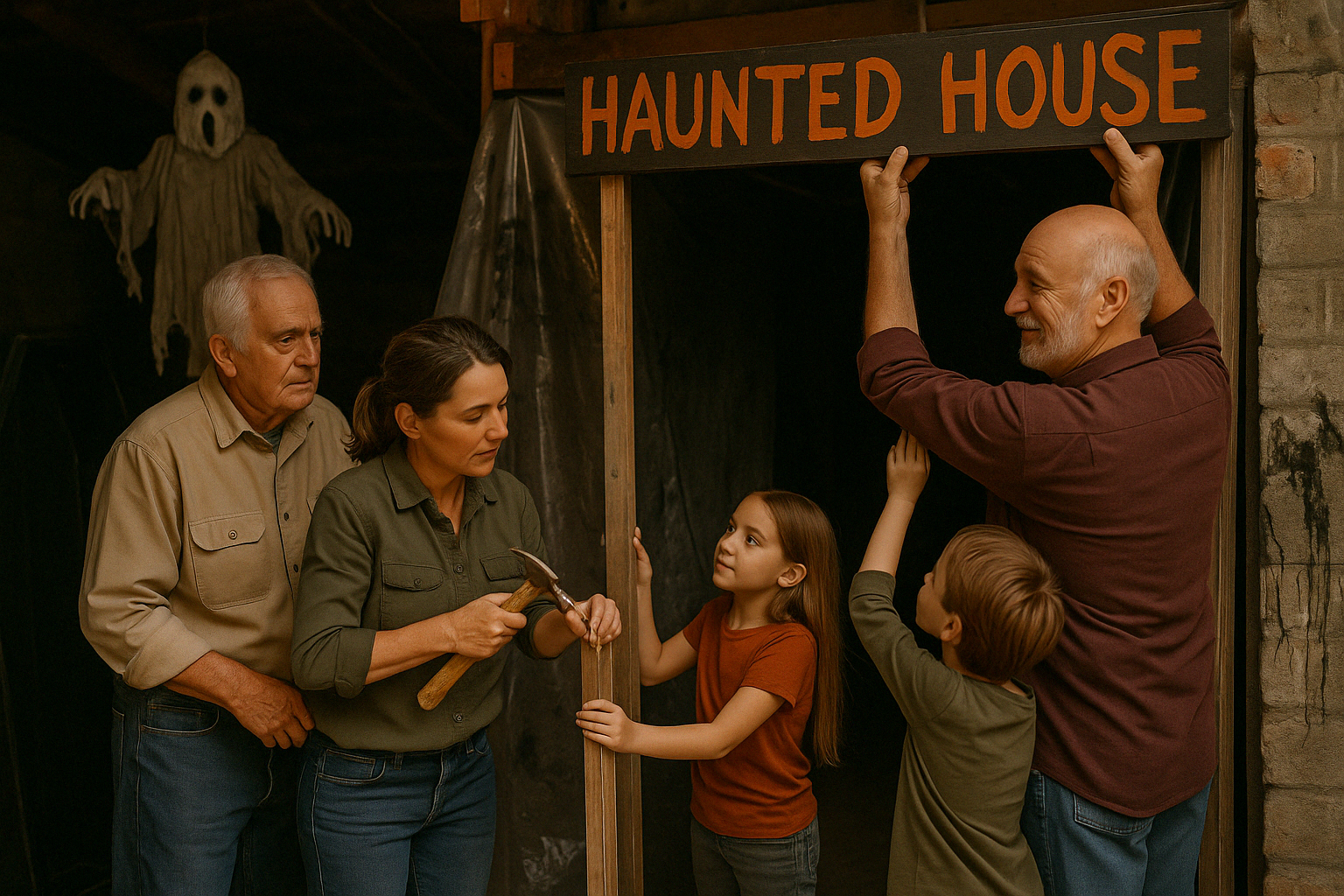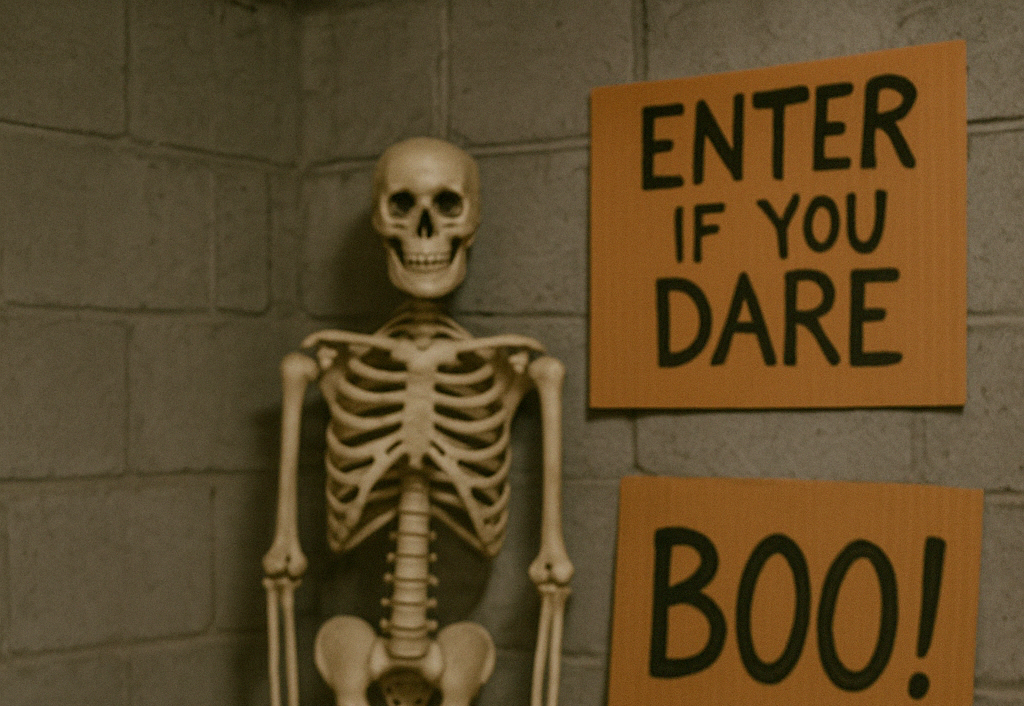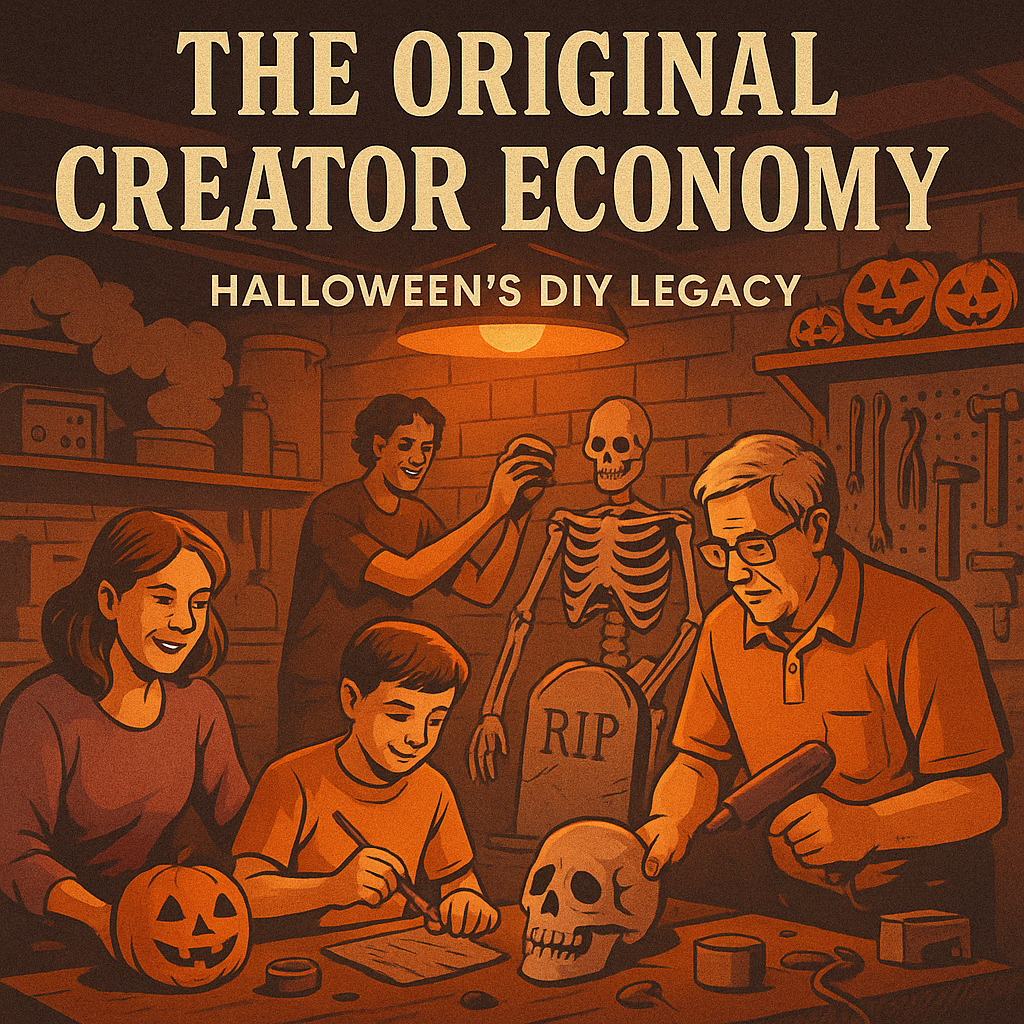The Original Creator Economy: How Halloween Built a World of Makers
Long before Etsy and YouTube, haunters were already building an economy out of fear and foam.
Not Just Costumes and Candy
When most people think about Halloween, they picture jack-o’-lanterns, trick-or-treaters, or maybe a foggy yard with a skeleton or two.
But under the surface, Halloween is something more—a grassroots creative economy that’s quietly supported thousands of makers, builders, artists, and scare actors for decades.
It’s not flashy. It’s not corporate.
And it may be the most authentic version of the “creator economy” we have left.

Halloween’s DIY Roots Go Deep
Long before YouTube tutorials and Etsy storefronts, DIY haunters were hand-painting signs, building props out of scrap wood, and mailing VHS tapes to share their builds. In the 1980s and ’90s, communities formed around local haunt clubs, fan conventions, and newsletter-style zines that detailed how to rig up a pneumatic pop-up ghost using parts from the hardware store.
These early haunters weren’t waiting for permission. They were building their own stages, stories, and scares—usually in their own garages.

From Foam Heads to Full-Time Hustles
Today, the tools are better, the reach is wider, and the creative economy around Halloween is bigger than ever.
-
Etsy searches for Halloween props spike 900% from August to October, according to Marketplace Pulse.
-
Sellers offering handmade tombstones, costume accessories, or animatronic mods can generate thousands in revenue during the peak months.
-
YouTube creators like Wicked Makers and DIY Prop Shop have turned their passion for Halloween into monetized channels with sponsorships, affiliate links, and ad revenue.
-
Local home haunters across the U.S. attract thousands of visitors each year, many of whom donate through tip jars, QR codes, or small ticket fees to support next year’s build.
There’s no single path—but that’s the point. Halloween doesn’t just reward creativity. It runs on it.

From Foam Heads to Full-Time Hustles
Unlike influencer culture or startup tech, Halloween’s creator economy is deeply collaborative and refreshingly unfiltered.
Knowledge passes freely through Facebook groups like Home Haunters, forums like HauntForum.com, and in-person at conventions like Midsummer Scream or TransWorld Halloween & Attractions Show.
In those spaces, you’ll find a foam sculptor teaching a lighting tech how to rig thunder effects with a relay board. Or a scare actor giving a mask sculptor feedback on how a latex design fits under stage lighting.
There’s a culture of contribution here—one that’s rare in the broader creator economy, where competitive edge is often hoarded behind paywalls or personal brands.

More Than a Hobby: Halloween as a Gateway to Creative Careers
Ask almost any successful haunt designer, theme park art director, or animatronic engineer where they got their start—and you’ll hear the same story:
“I built my first prop in high school.”
“I helped my dad with our yard haunt.”
“I just wanted to make something cool that would scare the neighborhood kids.”
Halloween is often the first spark for creative ambition. And thanks to its accessibility—you don’t need a film school degree or a gallery connection—it’s also one of the few creative industries that welcomes beginners with open arms (and plenty of zip ties).

A Legacy Passed Down in Fog and Foam
Perhaps the most powerful part of this economy is how it’s passed down.
Haunters who started with black plastic walls and blinking lights in the ’90s are now teaching their kids how to build motorized skeletons and pressure-triggered jump scares.
Many family-run home haunts have grown into full-scale seasonal attractions, Etsy brands, or traveling prop vendors. And those that haven’t? They still bring thousands of people together every fall—to laugh, scream, and admire what’s possible with a little creativity and a lot of duct tape.
Final Thoughts: The Creator Economy That Came First
In a world obsessed with metrics and monetization, Halloween remains one of the purest expressions of what the creator economy could be:
-
Community-powered
-
Hands-on
-
Low-budget and high-impact
-
Built from passion, not platforms
The next time you walk through a yard haunt or see a fog machine light up a driveway, remember: you’re not just looking at Halloween decor.
You’re looking at the heartbeat of a creative economy that was here before hashtags—and will still be going strong long after the trends disappear.
Latest Video
haunt your inbox
Sign up for exclusive news, spooky updates, and more.

